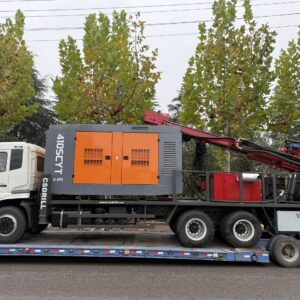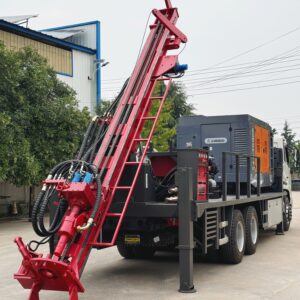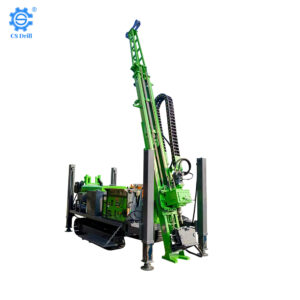Drilling for minerals is a complex process that involves careful planning, geological assessments, and advanced technology to locate viable mineral deposits. Drilling rigs do not simply start drilling at random locations; instead, they rely on geological studies, mapping, and various exploration techniques to identify and verify drill sites. Here’s a breakdown of how drilling rigs determine where to drill for minerals.
Geological Surveys and Mapping
Identifying mineral-rich areas starts with geological surveys. Geologists study the rock formations and soil compositions in a given region to understand the likelihood of finding specific minerals. Here’s how geological surveys contribute to the drilling process:
- Surface Mapping: By analyzing surface rock formations, geologists can determine the underlying rock types and structures that may indicate mineral deposits. Certain minerals are associated with specific types of rocks, such as gold with quartz or diamonds with kimberlite pipes.
- Remote Sensing: Remote sensing technology, such as satellite imagery, helps identify surface anomalies and structures related to mineral deposits. This technology provides data on topography, vegetation, and surface temperatures that can indicate the presence of minerals below.
- Geochemical Analysis: Geochemical surveys analyze the soil, water, and rock chemistry in an area. Trace elements in soil and water can provide clues about minerals beneath the surface. Samples are collected and tested to identify the chemical composition, pointing to potential mineralization zones.
Geophysical Exploration Techniques
Geophysical methods help pinpoint mineral deposits without the need for extensive surface disruptions. These techniques involve measuring physical properties of the Earth, such as magnetism, gravity, and electrical conductivity. Here are some common geophysical exploration techniques:
- Magnetic Surveys: Magnetic surveys detect magnetic anomalies in the Earth’s crust, which can indicate the presence of certain minerals, such as iron and nickel. Magnetometers are used to measure magnetic field variations that suggest mineral-rich rock formations.
- Gravity Surveys: Gravity surveys measure slight differences in the Earth’s gravitational field caused by density variations in subsurface rocks. These variations can reveal ore bodies or geological structures associated with mineral deposits.
- Seismic Surveys: Seismic surveys involve sending sound waves into the ground and measuring their reflections to create subsurface images. This method is especially useful for identifying structures and layers that could contain minerals.
- Electrical Conductivity and Resistivity Surveys: Some minerals are highly conductive or resistive. By sending electrical currents through the ground and measuring resistance, geologists can identify materials with distinct electrical properties that may indicate the presence of certain minerals.
Exploratory Drilling
After promising locations are identified through surveys, exploratory drilling is conducted to confirm the presence and concentration of minerals. Exploratory drilling involves drilling small-diameter boreholes and extracting core samples for examination.
- Core Sampling: In core sampling, cylindrical samples of rock are brought to the surface, allowing geologists to analyze the mineral content at different depths. This method provides detailed information about the mineral composition, density, and structure of the ore body.
- Reverse Circulation Drilling (RC): RC drilling is used to quickly gather rock chips from specific depths. While less precise than core sampling, RC drilling is faster and more cost-effective, making it useful for initial exploratory assessments.
Analyzing the Economic Viability of Mineral Deposits
Once minerals are located, it’s essential to evaluate their economic viability. This involves estimating the size and grade of the deposit and analyzing factors like accessibility, mineral processing costs, and market prices. Only deposits that are profitable to mine proceed to the extraction phase.
FAQs About Mineral Exploration and Drilling Rigs
Q: How accurate are these methods in locating minerals?
A: Geological and geophysical methods provide strong indications, but they don’t guarantee precise locations. Exploratory drilling is necessary to confirm the findings and accurately assess mineral quantities.
Q: How deep can drilling rigs reach?
A: Drilling depths depend on the rig type and geological conditions. Some mineral drilling rigs can reach depths of several thousand feet, but many exploratory holes are drilled to much shallower depths.
Q: Are there environmental impacts from exploratory drilling?
A: Exploratory drilling has minimal impact compared to full-scale mining. Companies often follow environmental regulations to reduce disruptions, and drilling sites are typically rehabilitated after exploration ends.
Drilling rigs rely on a combination of geological knowledge, advanced technology, and exploratory drilling to locate minerals accurately. These methods ensure efficient exploration while minimizing environmental impacts and economic risks.
CSDRILL produce kinds of water well drilling rigs and drilling services.If you’d like more information about the right drilling rig for your project, then contact us to schedule a free assessment. Fill in the contact form or send an email to Lily@csdrill.com





